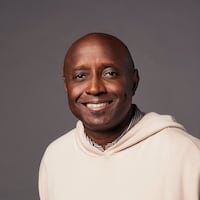Braves shortstop Dansby Swanson played in his first game of this spring training Tuesday at the Yankees (he got a hit). Swanson delayed his debut to get his left wrist right. It bothered him for much of last season, kept him out of the postseason and required surgery during the offseason.
I hope Swanson comes out of spring feeling good and we get to see if the wrist is a reason why he was an ineffective hitter in 2018. Then again, he was an ineffective hitter in 2017, too. Maybe the No. 1 overall draft pick in 2015 will never be even an average big-league hitter.
That’s not to single out Swanson. On the contrary, it’s to highlight that baseball is a hard game. It’s difficult to project which young men will become good (or even average) major leaguers. Chances are that even a player like Swanson — talented, conscientious, athletic — won’t make it.
That's the reality with prospects. It's the downside of the Braves depending heavily on their pipeline, while being tight with their taxpayer-subsidized profits. It may be the Right Way to do it could be the Only Way for as long as Liberty Media owns the Braves — but then the fortunes of the major-league team can fluctuate as a steady stream of minor leaguers do or don't become good big leaguers.
That’s where the Braves are as they look to defend their NL East title in 2019. Repeating as champions will require some recently-graduated prospects to continue their ascent, and new ones to contribute. That can be a crap shoot.
I've previously cited sabermetrics research that concluded about 70 percent of Baseball America's top 100 prospects from 1990-2006 failed. Shaun Newkirk, writing at Royals Review and expanding on previous work by Scott McKinney, tweaked the definition of prospect success so it's relative to the average among their ranking group.
After studying the major-league outcomes for the top 100 prospects each year from 1993-2013, Newkirk wrote: “Prospects still fail more than they succeed no matter how you look at them, from a binary or relative basis. While with Scott’s study, about 55% of top end prospects succeeded, only about 40% did in my study.”
Obviously, this high failure rate is no secret. It’s why the Braves stocked their farm with multiple prospects when John Coppolella was general manager (and, before that, assistant GM). The hit rate doesn’t need to be so high when you take more swings.
This was to be the first year of what Coppolella envisioned as multiple waves of prospects arrived. Some of them are in spring camp with the Braves: third baseman Austin Riley and pitchers Kyle Wright, Mike Soroka, Kolby Allard, Touki Toussaint and Ian Anderson. All those pitchers except Anderson got a taste of the majors in 2018.
The Braves could use at least one of them in the rotation for 2019. Soroka is the highest-rated 2019 prospect among them at No. 25, but he was shut down with shoulder soreness last week. All eyes are on Wright (No. 39) and Toussaint (No. 53). (Riley eventually could earn a bench role with the Braves.)
Then there are the two graduated Braves prospects: outfielder Ronald Acuna Jr and second baseman Ozzie Albies, formerly ranked Nos. 1 and 11, respectively, among prospects. (Both were signed when Frank Wren was Braves GM). The expectation is that they will continue their rapid ascent and beat the odds to become top prospects who make it as major leaguers.
With Acuna, especially, there doesn’t seem to be any way that won’t happen if he’s healthy. There’s not a lot of holes in that quick, powerful swing. Maybe Acuna won’t match his crazy production from 2018 this year, but it would be a surprise if he doesn’t become a good player for a long time.
I'm less certain about Albies, a switch hitter. He's got to improve his left-handed swing to reach his full potential. Albies needs to get on base more, which means better plate discipline — per FanGraphs tracking data, only 18 everyday players swung at a higher percentage of pitches outside of the strike zone in 2018.
It’s reasonable to believe Albies and Acuna can get better with experience. Albies turned 22-years old in January and has just 566 career plate appearances. Acuna’s 21st birthday was in December and he has 487 PAs.
The Braves have even less to go on in evaluating their young pitching prospects. Soroka, Allard, Wright and Toussaint have pitched just 68 2/3 big-league innings between them. Right now, they mostly are just projection and potential.
That's where Swanson used to be. He was the No. 3 rated prospect in 2017 after a successful stint during a (rushed) call-up with the Braves in 2016. Swanson already is a good defender at the position in the field where it's most valuable. Maybe he still can make dramatic improvement as a hitter, though that's not typical for a player with more than 1,200 PAs.
It’s hard to figure which prospects will make it in the majors. The Braves are trying to build a foundation for the long term by hitting on more than they miss. They need some more prospect hits for 2019.
About the Author
The Latest
Featured


